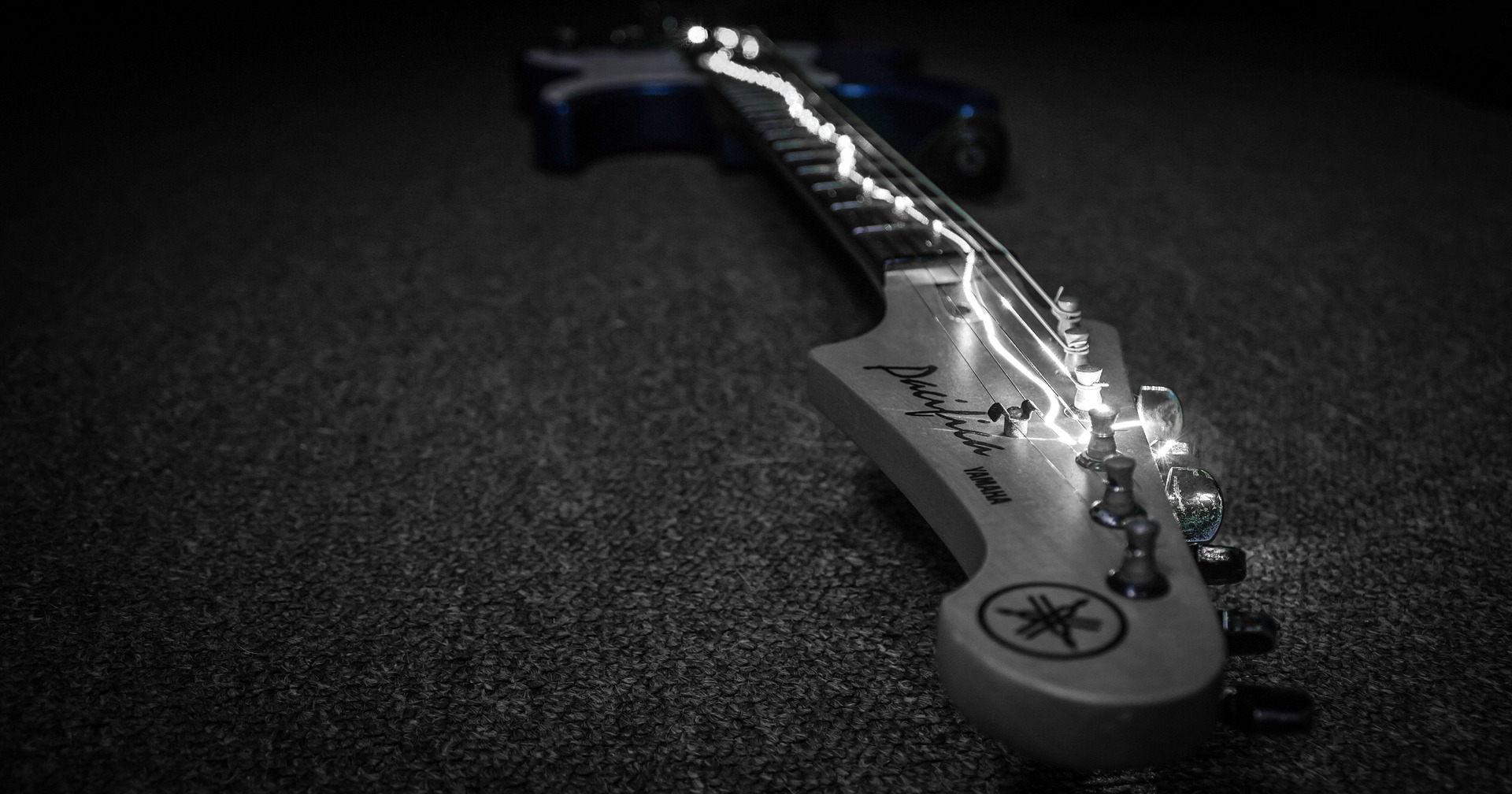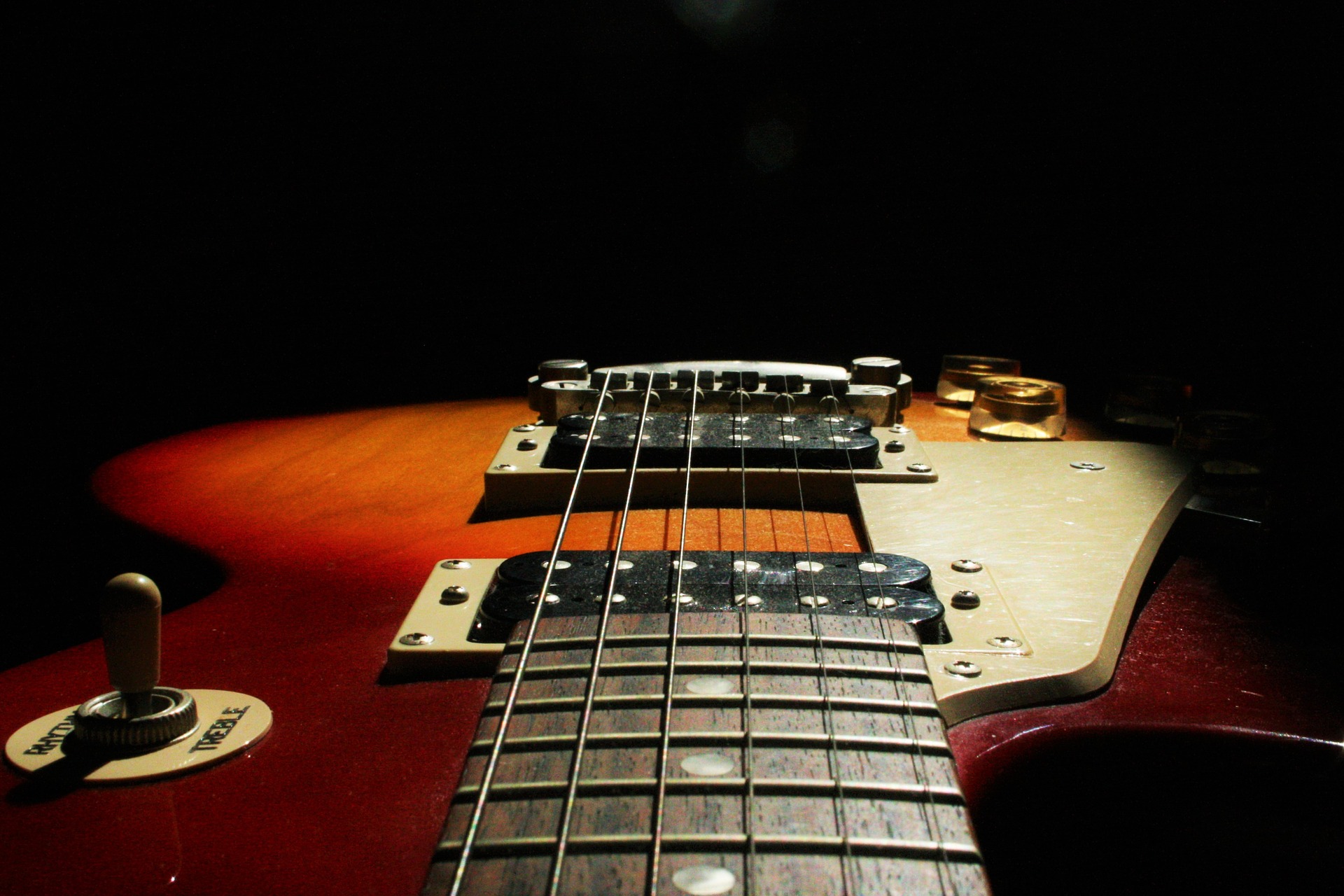Read Part 3 here.
The Perfect 4th
The perfect 4th is the ‘Smoke on the Water’ interval, where it’s used to great effect. In a scale, it’s usually an interval you won’t want to spend a lot of time hanging on. I see it more as a ‘stepping-stone’ interval. Here’s where you can find it:

Notice that it’s either right below the root on the next string toward the higher strings, or two frets down toward the lower strings EXCEPT on that B string, which you’re probably getting used to by now.
Checkpoint
What I want you get from this is a feel for where intervals are and to be able to find them without too much trouble. Choose a root note (it doesn’t have to be C) and name the intervals as you go – this will be a slow process at first but it’s what will eventually take your playing to the next level and beyond.
Pentatonics Revisited
Let’s see if we can apply everything from the previous parts to the good old minor pentatonic scale using B♭ as our root to break away from C for a second.
Remember that a pentatonic scale contains the intervals 1, ♭3, 4, 5, ♭7.
Here’s where we break away from running up and down scale patterns and playing blindly, however good it sounds to us! You’re going to have to suck it up for a while and play slowly to start to choose the intervals you play.
The first thing to do is know where all the B♭ notes are on the fretboard.

The most important intervals are of course the 3 and the 7, which in this case are a ♭3 and a ♭7. Notice that going toward the high strings you can choose to play the ♭3 on the same string or on the next string and that there’s a ♭7 two frets below any root. Just playing around with these three intervals will give you the essence of the scale. The 5th is another strong interval and the 4th, as mentioned, acts as more of a passing or stepping-stone interval.
I encourage you to explore the scale in this way though you will fall back into the box patterns, which is still perfectly valid. What I want you to see here is that not all intervals in a scale were created equally and that choosing what you play has a dramatic and highly beneficial effect. In fact, I attribute the ‘running up and down scales’ sound to players giving equal weight to every interval in the scale.
Once you’re comfortable choosing the intervals you play, try throwing in the ♭5 and you have the blues scale, only from a whole other perspective.
Again, don’t worry if you revert back to patterns, what I want you to see here is that there is another way!
Twos and Sixes
Let’s go back to C as our root note and as far as seconds go, we have a major 2nd and a minor second. They are both very easy to find because they’re never far from the root.
Here’s how to find the major 2nd. Notice that you have a couple of options with that shifting B string bringing the 2 a little closer to the G string.

Minor 2nds are even easier to find because they’re always right next to the root note.

Let’s have a look at where the Major 6 falls in relation to the root. You’ll find the Major 6 in both major scales such as Lydian (1, 2, 3, ♯4, 5, 6, 7) and minor scales such as Dorian (1, 2, ♭3, 4, 5, 6, ♭7).

You’ll find the Minor 6 mainly in minor scales such as Aeolian (1, 2, ♭3, 4, 5, ♭6, ♭7) and the Phrygian (1, ♭2, ♭3, 4, 5, ♭6, ♭7), as well as in major scales in the guise of the ♯5 such as one of Allan Holdsworth’s favorite scales, the Ionian ♯5 (1, 2, 3, 4, ♯5, 6, 7).

Again, notice all the possible routes to the Minor 6, as well as taking into account what happens when the B string is involved.
You’ll want to spend some time getting used to finding intervals on the neck as this will set you up nicely for the rest of the series; in fact, the more time you spend on these first four parts, the quicker things will come together.
In Part 5, we reach the turning point, or the point of no return!




Thanks for the good information and tips. I am glad to finally find my way on the fretboard.
A question about the text in Part 4 “Minor 2nds are even easier to find because they’re always right next to the root note.”
Isn’t Minor 2nd in the same place as Major 2nd? Or did I misunderstand something there?